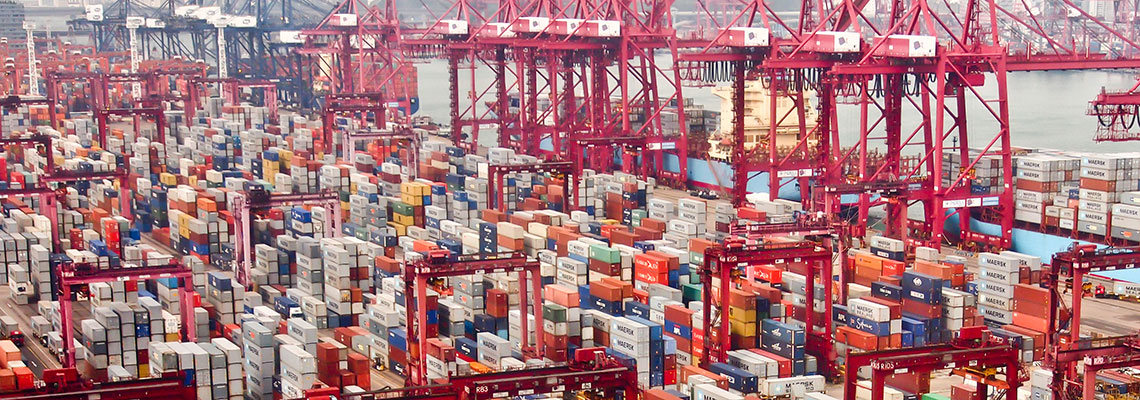
A trial involving one of the biggest human trafficking cases in US history kicked off in a New Orleans federal court this week. Workers allege that Signal International, a US Gulf Coast shipbuilding company, recruited them from India with false promises and then forced them to live in fenced-in labor camps and work for little to no pay. This case stands out because labor traffickers are rarely prosecuted, despite the millions of workers that are victimized.
How common is labor trafficking?
Labor trafficking, a form of human trafficking, involves the use of lies, violence, and other forms of fraud and coercion to force a person into working for little or no money. Labor trafficking was first criminalized in the United States in 2000 with the passage of the Victims of Trafficking and Violence Protection Act.
Of the estimated 20.9 million victims of forced labor globally, approximately 14.3 million are victimized in agriculture, domestic servitude, construction, and manufacturing. Global profits from forced labor exploitation are estimated at $51.2 billion. While we lack reliable estimates of the number of labor trafficking victims in the United States, our research confirms these crimes are often hidden in plain sight, taking place all over the country and in multiple industries.
What happened in the Signal case?
The allegations are as follows: Hundreds of welders and pipefitters were recruited from India to repair oil rigs damaged by Hurricane Katrina. They entered the United States lawfully through the H2B visa program, and some paid recruiting fees up to $25,000 for the opportunity to work here. Recruiters promised jobs, green cards, and employer-provided housing. But in reality, workers were forced to live in crowded shipping containers, sometimes with 24 men in one unit. They were underfed, forced to work around the clock, and charged over $1,000 in monthly rent, along with other fees that were deducted directly from their paychecks, leaving them with basically nothing.
Why didn’t the workers just leave?
While our laws on trafficking are rooted in the principles of the Thirteenth Amendment, cases of modern-day slavery may not look like the slavery of the past, and it’s important to recognize those distinctions. In some cases, workers are physically constrained from leaving. In the Signal case, they were living on an isolated compound surrounded by barbed wire and armed guards.
However, not every labor trafficking case requires physical restraint. Psychological coercion is a far more common tactic. Traffickers threaten violence and degrade a workers’ ability to leave by depriving them of food and medical care and by verbally abusing them. Abuse of the law is another common tactic, where traffickers threaten to arrest or deport workers who do not comply or who try to leave. The Signal employees were guestworkers here on H2B visas. That means their right to live and work in the United States was directly tied to their employer. If the workers left the company, they would immediately lose their immigration status and become unauthorized.
In addition, workers often lack the financial means or social network to escape. Recognizing these distinctions matters because they have implications for the public’s ability to identify victims and hold traffickers accountable through our justice system.
Why does this case matter?
Labor traffickers are rarely held accountable in the United States
Despite the horrendous conditions, neither Department of Labor nor law enforcement uncovered the case. Instead, the Signal case started to unravel after a worker attempted suicide and workers were retaliated against for seeking information about their rights. By and large, US law enforcement are not proactively investigating labor trafficking cases, and formal mechanisms aren’t in place regarding the Labor Department’s role in identifying and referring potential cases.
Labor trafficking survivors rarely receive civil damages or criminal restitution for the crimes committed against them
The Signal case is part of a series of lawsuits, galvanized by a bevy of attorneys and law firms willing to bring pro bono civil suits on behalf of smaller groups of victims. If labor trafficking cases are not pursued criminally, civil damages may be a survivor’s only option. However, civil litigation is also rare, due to limited and restricted funding and a lack of attorneys and other resources needed to bring these cases forward.
What can be done?
Combatting labor trafficking requires a multifaceted approach. We can start by closing loopholes in labor and immigration laws; implementing coordinated efforts between law enforcement agencies and the Department of Labor to identify, investigate, and prosecute cases; increasing housing, job training, and other services for victims; and stepping up outreach to a public largely unaware that crimes resembling slavery take place in America.
Photo from Shutterstock
Tune in and subscribe today.
The Urban Institute podcast, Evidence in Action, inspires changemakers to lead with evidence and act with equity. Cohosted by Urban President Sarah Rosen Wartell and Executive Vice President Kimberlyn Leary, every episode features in-depth discussions with experts and leaders on topics ranging from how to advance equity, to designing innovative solutions that achieve community impact, to what it means to practice evidence-based leadership.